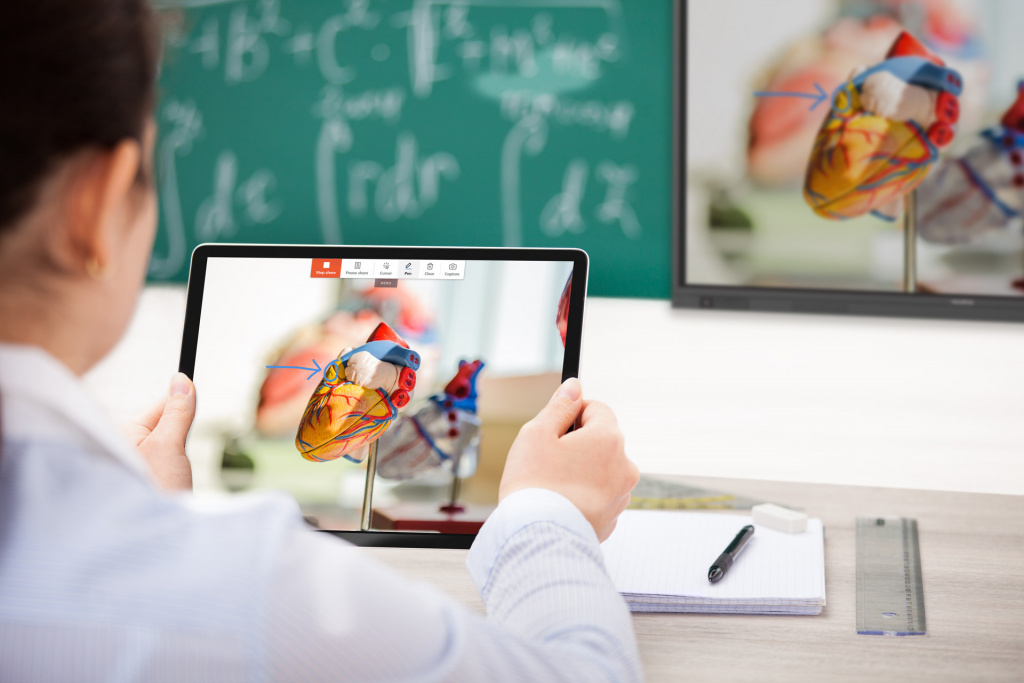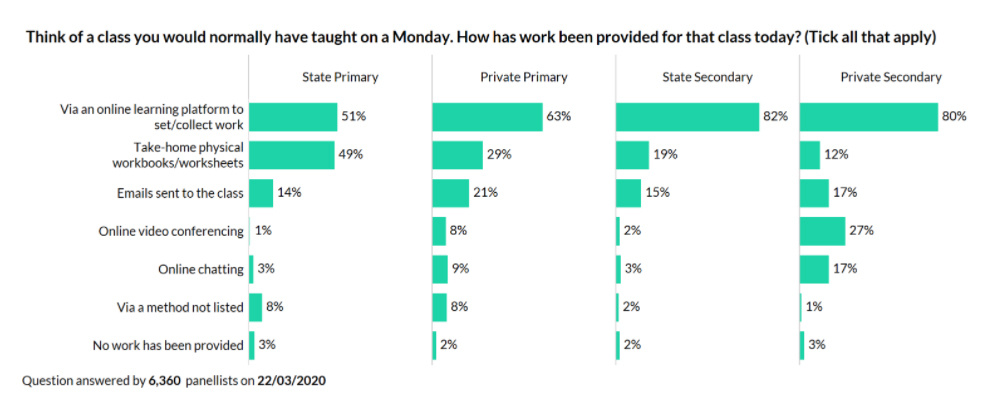
I recently came across this survey from Teacher Tapp, an app that asks teachers from all sectors three quick questions every day at 3.30 and gathers their responses. It is an invaluable tool for schools that want to see how they compare to others and provides insights for CPD. But it is also proving a good way of recording the story of education in our times.

Nearly half of state primary schools in the survey made children take home physical workbooks and worksheets. There was a sharp divide between state and private schools. 'Private school secondary teachers are by far the most likely to be using online video conferencing (27%) or online chatting programmes (17%). In part this might be because these programmes are more expensive and because it assumes that students will have their own device and access to the internet that’s good enough to stream video.' In contrast just 1% of state primaries were set up and using online video conferencing and 3% had a facility for online chat.
As lockdown bit, schools learnt that hard copies only worked if children could collect them at school and take them home because few had printers. Also, hard copies do not make for interactive learning that responds to learners' needs, especially if the gap between doing the work and receiving the teachers' marks and comments is spread over several weeks.
This accelerated the move to online learning and schools had to find technology and distribute it as fairly as possible. We have covered the Digital Divide in many other articles and cannot pretend that the move to online learning met all students' and teachers' needs, nor was it equitable, but it did become the main delivery method in most schools.
It would be fair to say that many saw it as the poor relation and were longing to get back to face to face teaching. However, some teachers have adopted the new technology whole-heartedly and adapted their teaching methods with great success.